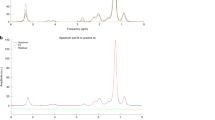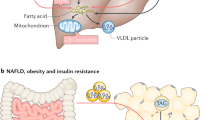Abstract
Two of the clinical features of the malnutritional state seen in tropical children and known as kwashiorkor are the marked increase of fat in the liver and the presence of depot fat in usual amounts. As the diet leading to this condition is poor in protein and fat, and contains relatively large amounts of carbohydrate, it was hoped that a study of the composition of the liver lipid might lead to a clearer understanding of the origin of this lipid. Earlier work1 on the phospholipid, non-saponifiable and fatty acid fractions of the liver lipid in kwashiorkor showed that their proportions and degree of unsaturation were not the same as in excess liver lipid found in children who were apparently well nourished but suffering from other diseases.
This is a preview of subscription content, access via your institution
Access options
Subscribe to this journal
Receive 51 print issues and online access
$199.00 per year
only $3.90 per issue
Buy this article
- Purchase on Springer Link
- Instant access to full article PDF
Prices may be subject to local taxes which are calculated during checkout
Similar content being viewed by others
References
Macdonald, I., Metabolism, 9, 838 (1960).
Cramer, D. L., and Brown, J. B., J. Biol. Chem., 151, 427 (1943).
Moore, C. H., and Cook, R. P., Biochem. J., 73, 43, P (1959).
Author information
Authors and Affiliations
Rights and permissions
About this article
Cite this article
BAKER, R., MACDONALD, I. Liver and Depot Fatty Acids in Kwashiorkor. Nature 189, 406–407 (1961). https://doi.org/10.1038/189406a0
Issue Date:
DOI: https://doi.org/10.1038/189406a0
This article is cited by
-
Speicherungsst�rungen des subcutanen Fettgewebes im fr�hen Kindesalter
Zeitschrift f�r Kinderheilkunde (1962)
Comments
By submitting a comment you agree to abide by our Terms and Community Guidelines. If you find something abusive or that does not comply with our terms or guidelines please flag it as inappropriate.



